Are you curious about how plastic recycling actually works and whether new technologies can improve the process and make it more profitable, thus incentivizing companies to collect more plastic?
It’s hard to miss the amount of plastic around us. It’s everywhere and pretty much impossible to avoid. Plastic has some great features, but a lot of it is single-use, leading to a lot of plastic waste. This waste should be separated so that it can be recycled.
If you’re not in the mood to read everything here! Just check out the video at the bottom of the article…
How Recycling Differs Across the Globe
Recycling practices vary significantly from country to country. In Germany, for example, there are four bins: one for general garbage (Restmüll), one for cardboard or paper, another for recyclable items (Gelber Sack), and a bin for vegetable waste (Biomüll).
In the U.S., recycling can differ from town to town, creating confusion. When on vacation, it can be unclear which waste item goes in which bin, as different vacation homes have different labeling systems.
Singapore has its own system. Most residents live in high-rise buildings with a central chute for waste disposal on each floor. While there are blue bins at the ground floor for plastics, glass, and cardboard, only 6% of plastics are recovered in Singapore.
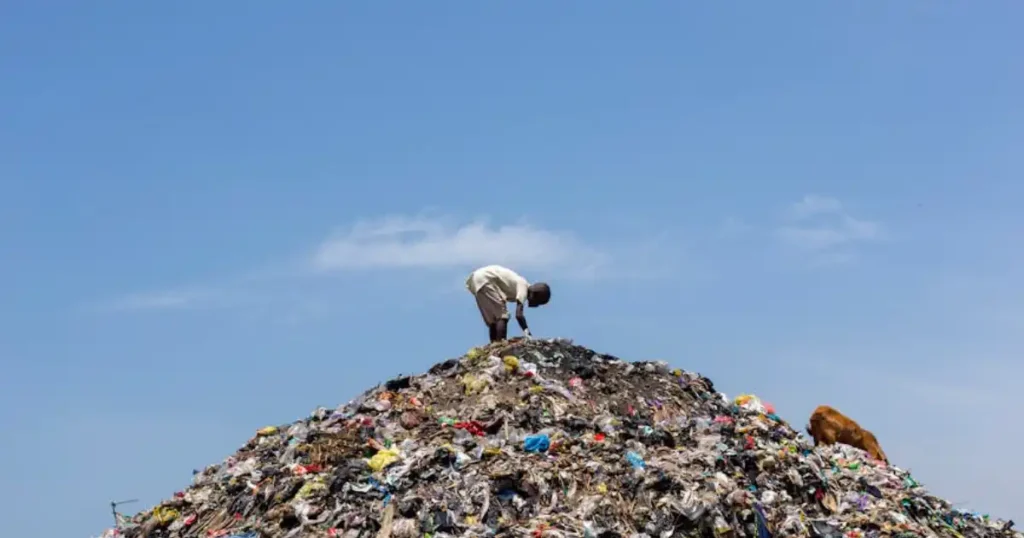
The Recycling Plant Experience
Trucks collect waste daily and take it to a recycling plant, where they try to recover as much plastic as possible. However, only up to 15% of recyclable items are typically recovered. The other 85% ends up in a landfill or an incineration plant.
One individual wanted to change this. The goal was to save the planet, but money can be a powerful motivator. Finding a way to make saving the planet a profitable business is key.
The Journey to Singapore’s Recycling Facility
Singapore’s main recycling facility is in a remote location in the north of the city. The trip involves a one-hour train ride, a 20-30 minute bus ride, and a 10-15 minute walk. The facility is dirty, smelly, and noisy.
Trucks dump everything on the floor. A crane picks up the waste and puts it on vibrator conveyor belts. All the recyclables are collected together, requiring a sorting process done partly by machines and significantly by human workers.
The Sorting Process
First, bulky items are removed. Then, machinery picks up metal items using a magnet. A machine separates materials based on density, with paper and cardboard on one side and heavier items like plastic bottles and aluminum cans on the other.
Workers alongside the conveyor belts each pick one type of material, such as aluminum cans or PET bottles. However, this system is not very efficient, with only 11-15% of items being picked.
Challenges in Recycling
One reason for the low percentage is the difficulty in finding workers for this type of job. There’s a high turnover rate. Sometimes, people quit on their first day. Singapore’s aging population exacerbates the shortage of people who can do this kind of job. This is where automation can help.
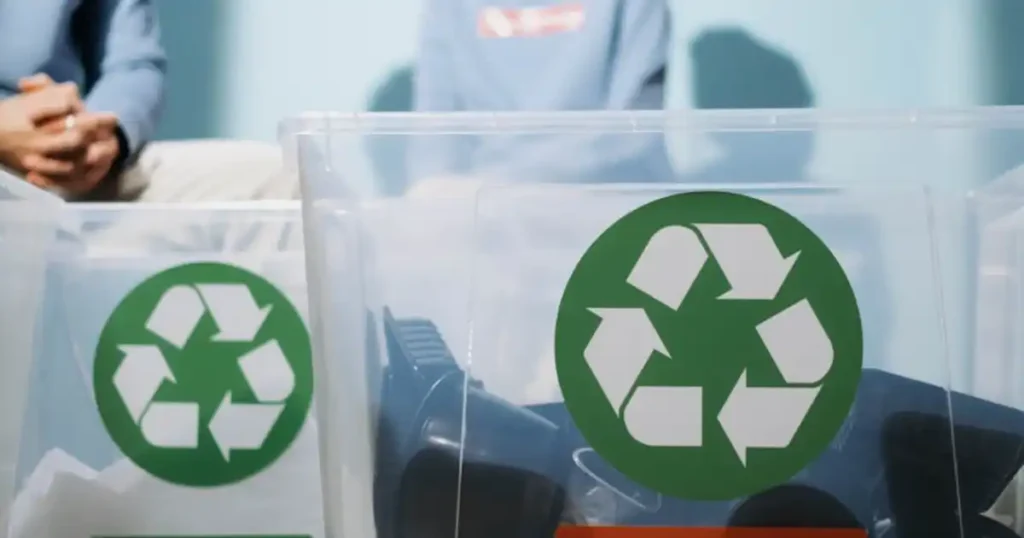
Workers at the facilities require a lot of training. It takes nearly three to four months to train a person to identify plastics, distinguishing between PET and HDPE, as well as PP.
HDPE is typically used for things like shampoo bottles. PET is commonly used for water bottles. PPE can be found in margarine tubs, storage containers, or bottle caps.
Terahertz Technology: A New Approach
Identifying plastics reliably and quickly is challenging. Camera-based systems often provide unclear images. A better technology than imaging in the visible spectrum is needed. This is where terahertz comes in.
Terahertz allows for something like an X-ray technology, but without radiation. It gives out a unique signature of an item material. This allows for the identification and classification of items based on their unique signature.
Terahertz waves are electromagnetic waves. They fill the gap between microwaves and infrared light in the electromagnetic spectrum. The commercial device cannot generate this wave range, such as the terahertz range.
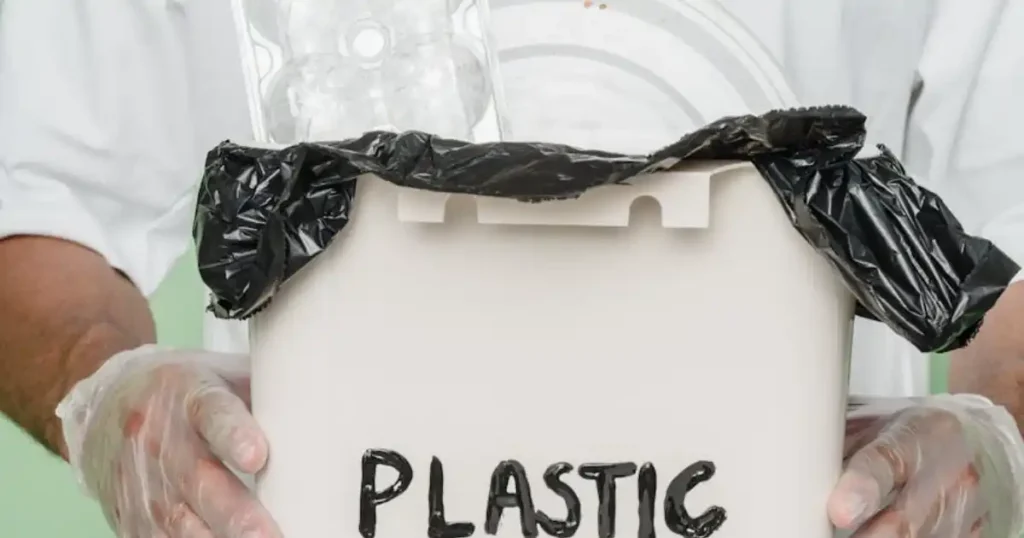
Recent Breakthroughs
Recently, investigators have made significant breakthroughs in the terahertz source and detectors space using the quantum cathode laser. Advances in semiconductor industry have also miniaturized some detectors to use the terahertz imaging device as a terahertz scanner or terahertz camera.
Terahertz scanners are able to distinguish between different types of plastic because each plastic has a different dielectric property, as well as polarity. On the terahertz range, it shows the different terahertz optics properties in terms of the absorption, transmission and reflection. These different pictures allow the identification of the types of the plastic.
Terahertz waves also allow you to look beneath the surface of an object without the dangerous ionization that x-rays come with. Through the scanning technology, it is able to see what is inside. When there’s liquid or aluminum foil inside, it looks much darker.
Making Recycling More Profitable
This technology could make recycling and sorting plastic waste more profitable. It allows for the further separation of plastics based on how clean they are inside. There can be different bins for clean and dirty plastic as well.
The difference between clean and sorted plastics can be almost 50% more in revenue. This incentivizes companies to collect more plastic and helps to increase the recycling rates.
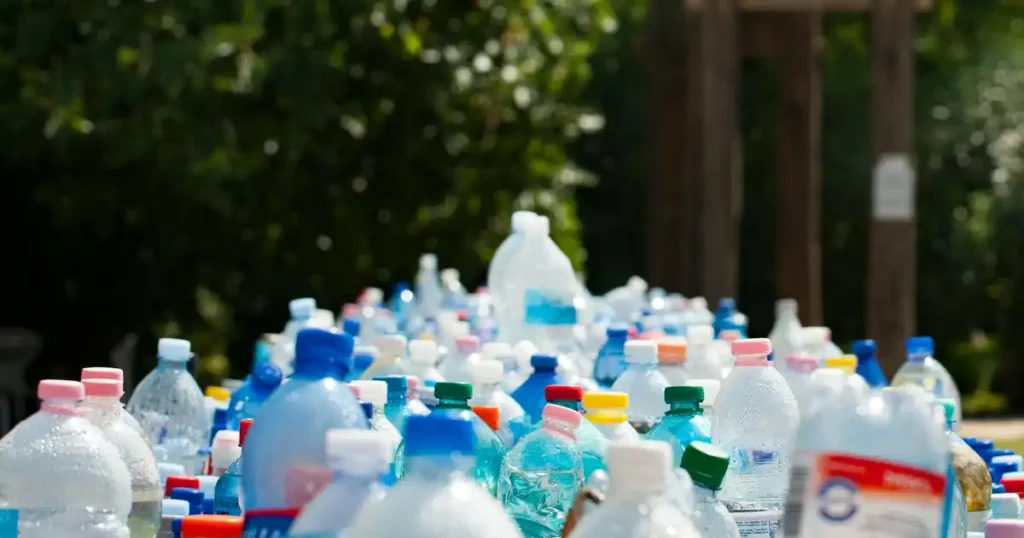
A robot that gets input from an AI. The AI tells the robot which item to pick and what bin they should go into. The AI itself classifies the items based on images from a terahertz scanner.
With this solution, recycling rates can be driven up. The key thing is to maintain the quality, which means about the purity of the base. If the AI model classifies something as a PET bottle, then it has to be nearly 100% sure. It is okay to miss items on the conveyor belt. But, however, whatever is classified as PET has to be nearly 100% sure. From testing, predictions are upwards of 98% sure that the predictions are right.
The Plastic Trombone: An Unexpected Solution
Plastic is not always the problem. Sometimes plastic isn’t the problem. Rather, it is, in fact, the solution. For example, a plastic trombone is more robust, doesn’t rust or tarnish and is cheaper than a brass instrument.
Plastic trombones are lighter, cheaper, and come in different colors. The plastic instruments created, in a way, a bit of a trombone revolution. Since then, 250,000 plastic trombones and another 350,000 other plastic instruments have been sold to 53 countries all over the world.
ABS plastic is very easy to recycle. However, it’s difficult to access recycled ABS from a source which is known to be 100% safe, due to the safety laws around child products.
Terahertz QR Codes: A Traceability Solution
Embedding QR codes into the plastic that shows up in the terahertz image is being explored. Scanning with terahertz technology can identify what type of plastic it is, or its origin. This can help with the traceability, compared to printed QR codes that could be lost.
This gives businesses a way to prove how much of their plastic has been recycled. Even without QR codes, terahertz waste sorting technology can provide data about recycling rates.
For example, from the waste collected from a hotel or shopping mall, you can determine how much was recovered. Using the terahertz scanner just for that is the low hanging fruit. It’s relatively easy to install and not as expensive as the whole system with a robot sorting the waste.
A Hybrid Approach: Combining Humans and Technology
Where there’s enough labor force available, it’s better to not deploy a robot. Instead, a version of such technology can help them make their job better. Lights can be used to guide the picking. The AI still decides which items to pick based on the terahertz scan.
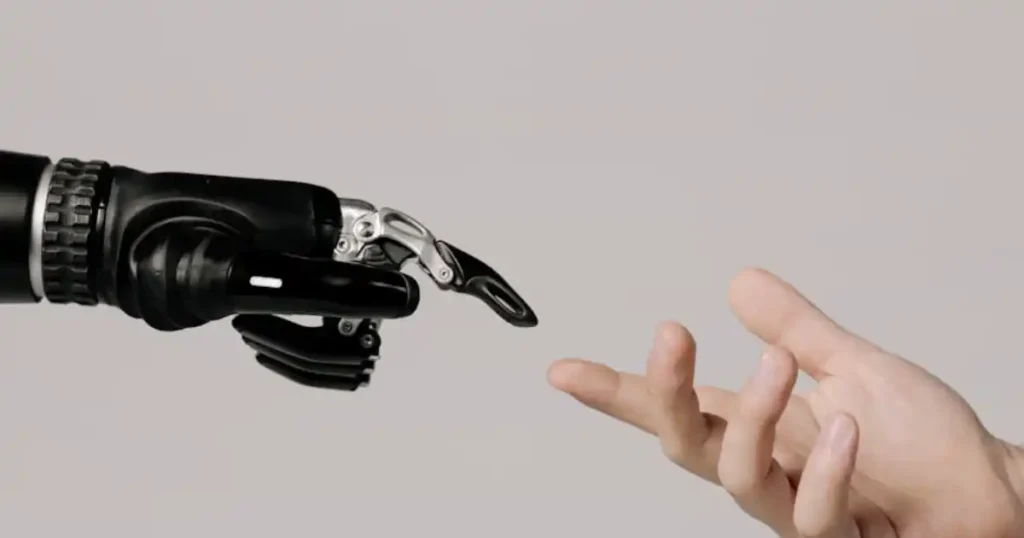
The actual picking is done by humans. The system simply shines a light on the item that the worker should pick. This removes that decision making process that human has to go through to identify the plastic. This way anybody can sort through with high accuracy right from day one.
Terahertz scanning technology can divert a lot of recyclable plastic from landfills. Prices for recycled plastics are going up, which will help the roll out of those terahertz scanners more quickly. The fact that this can help people make money will be good for adoption and in turn for the environment.
Conclusion
Ultimately, innovative technologies like terahertz scanning offer solutions for better sorting and recycling of plastic waste, driving higher recycling rates and increased profitability. Combining these technological advancements with responsible waste management practices can significantly reduce landfill waste and promote a more sustainable future.
Ready to turn trash into treasure? If so, watch this inspiring video for 100 creative ways to repurpose plastic bottles—from handy household hacks to eco-friendly innovations!